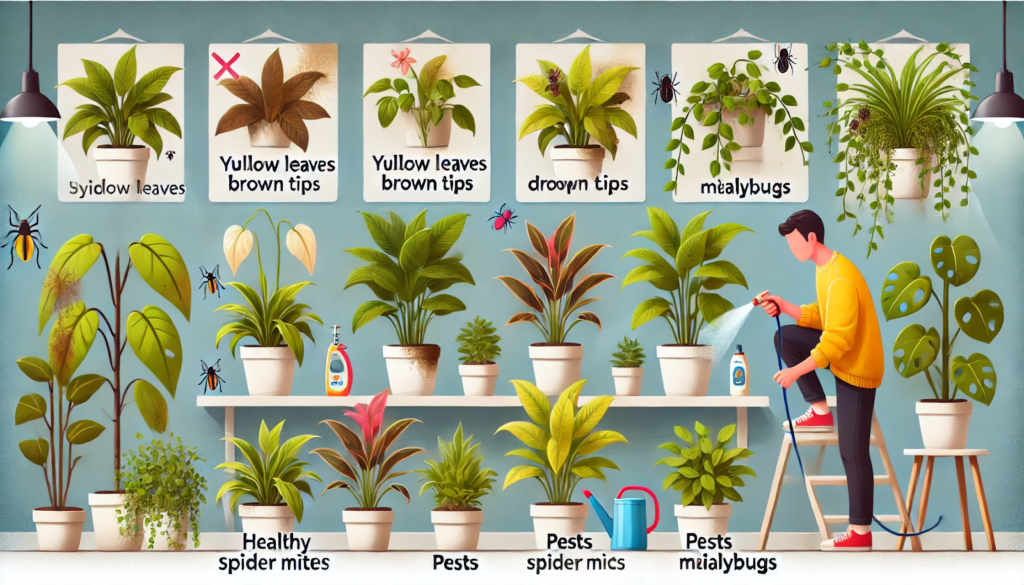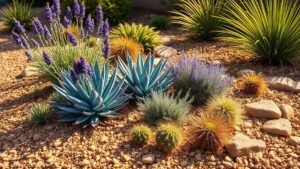Even the most low-maintenance indoor plants can run into trouble from time to time. Whether it’s yellowing leaves, pests, or drooping stems, these issues can be frustrating for beginners and experienced plant owners alike. The good news is that most common houseplant problems are easy to identify and fix when caught early.
This article covers the most frequent indoor plant issues and offers practical solutions to get your plants back on track.
1. Yellowing Leaves
Causes:
- Overwatering is the most common cause.
- Lack of nutrients or poor drainage.
- Insufficient light can also play a role.
How to Fix It:
- Let the soil dry before watering again.
- Check if the pot has proper drainage.
- Move the plant to a brighter location.
- Consider feeding with a balanced houseplant fertilizer.
2. Brown Leaf Tips
Causes:
- Low humidity is a major culprit.
- Excessive use of fertilizer or salt build-up in the soil.
- Irregular watering routines.
How to Fix It:
- Increase humidity with a humidifier or pebble tray.
- Flush the soil with water to remove salt buildup.
- Use distilled or filtered water if your tap water is too hard.
3. Drooping or Wilting Leaves
Causes:
- Can be caused by both overwatering and underwatering.
- Sudden temperature changes or drafts.
- Root rot or compacted roots.
How to Fix It:
- Check the soil moisture before watering.
- Repot if the roots are too crowded or mushy.
- Move the plant away from vents or cold windows.
4. Leaf Drop
Causes:
- Stress from environmental changes.
- Lack of light, or too much direct sun.
- Overwatering or underwatering.
How to Fix It:
- Keep plants in stable conditions with consistent care.
- Gradually adjust light conditions if moving them.
- Establish a regular watering routine.
5. Pale or Faded Leaves
Causes:
- Insufficient light is the primary cause.
- Nutrient deficiency or old age of the leaves.
How to Fix It:
- Move the plant closer to a window or supplement with grow lights.
- Feed monthly with a balanced indoor plant fertilizer.
6. Mold or Fungus on Soil
Causes:
- Poor air circulation and overly moist conditions.
- Organic matter decomposing on the soil surface.
How to Fix It:
- Scrape off the top layer of moldy soil.
- Allow the soil to dry out between waterings.
- Improve airflow in the room or near the plant.
7. Fungus Gnats
Causes:
- Moist soil and decaying organic matter attract fungus gnats.
How to Fix It:
- Let the topsoil dry out completely.
- Use sticky traps or a layer of sand on top of the soil.
- Treat with neem oil or a biological control like Bacillus thuringiensis.
8. Spider Mites
Causes:
- Dry air and dust buildup on leaves.
How to Fix It:
- Mist your plant regularly to increase humidity.
- Wipe leaves with a damp cloth or neem oil solution.
- Isolate affected plants to prevent spreading.
9. Mealybugs
Signs:
- White, cotton-like masses on stems and leaf joints.
How to Fix It:
- Remove bugs with a cotton swab dipped in rubbing alcohol.
- Spray with neem oil weekly until the infestation is gone.
- Quarantine the plant if the infestation is severe.
10. Leggy or Spindly Growth
Causes:
- Not enough light, especially during winter months.
How to Fix It:
- Move your plant to a brighter spot.
- Rotate the pot regularly so all sides get equal light.
- Pinch or prune stems to encourage bushier growth.
How to Prevent Common Problems
- Routine Checks: Inspect your plants weekly.
- Clean Leaves: Dust prevents photosynthesis; wipe leaves gently.
- Proper Tools: Use clean, sharp shears for pruning.
- Repot When Needed: Refresh soil every 1–2 years.
Healthy Plants Start with Attentive Care
Most indoor plant problems stem from inconsistencies in light, water, or humidity. By observing changes and acting early, you can prevent minor issues from turning into major setbacks. With time and attention, your houseplants will thrive and reward you with vibrant growth and lush greenery.






